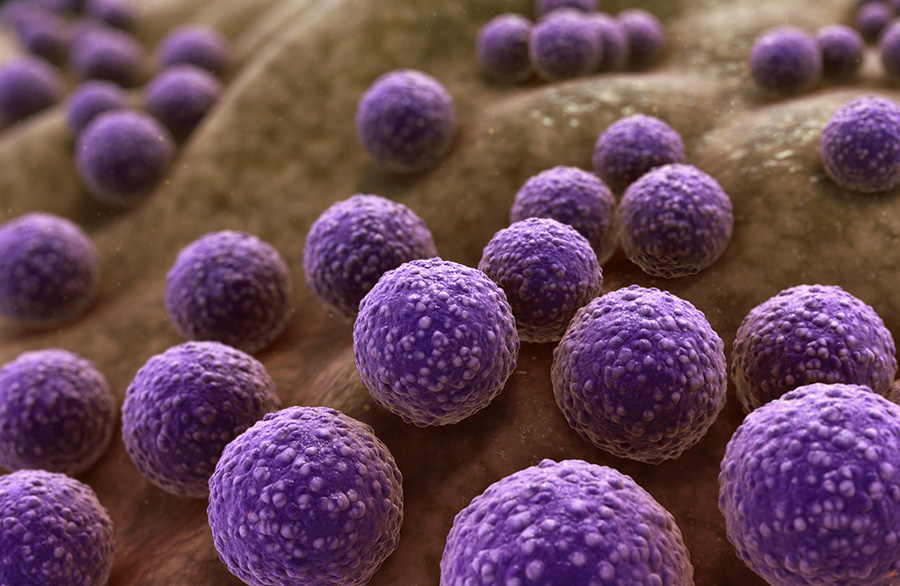
Portable, Energy-free Liquid Crystal-based Bacterial Sensor [NI-TECH-2020-14]
A portable, energy-free liquid crystal-based optical sensor that uses engineered proteins to detect bacteria at point of use.
BACKGROUND
The presence of unwanted bacteria is directly responsible for diverse public health issues worldwide, from poor treatment of drinking water to uncontrolled clinical infections associated with high rates of mortality and morbidity. A specific indicator of the presence of bacteria in clinical products, environmental sources or sterile environments is the detection of free muropeptides (MR), which are universal breakdown products of peptidoglycan (PG), a structure unique and ubiquitous to bacteria and the major component of the cell wall. However, MRs were never used as a diagnostic target to sense bacteria.
Early detection of any type of infectious disease is crucial for the success of the clinical treatment adopted and is still the best approach to improve survival rates. In particular, the early and rapid identification of bacteria as infectious agents and its differentiation from other agents such as virus and fungi is of primary importance for a fast empirical therapeutic decision-making and treatment success. Examples of diseases in which fast diagnosis can save lives are meningitis, multidrug resistant bacterial infection outbreaks in hospitals, and cholera or gonorrhoea epidemics in developing countries. Other applications in which a fast diagnosis would provide a major economic and health advantage would be in blood banks and food safety screenings and water and environmental quality control. However, the currently available diagnostic tests do not answer the need for a prompt response, as they have long response times, require invasive procedures, complex sample preparation and laboratory manipulation, lack sensitivity, and can be too specific, restricting its application to a particular microorganism or disease.
Therefore, the development of a non-invasive and portable blood test effective in detecting early infection would represent a relevant step forward in clinical diagnostic and environmental control.
TECHNOLOGY OVERVIEW
This technology refers to engineered recombinant proteins that bind to peptidoglycan (PG), a structure unique and ubiquitous to bacteria. The technology here described uses this capability to bind bacteria and thus produce a bacterial sensor. The system is internally coated by an activated matrix with immobilized PG-binding protein and is externally sandwiched by two crossed polarizers (Fig. 1). After sample application, the cell is filled with a liquid crystal (LC) that interacts with the incident light and transduces the result. Without analyte, the homeotropically aligned LC molecules do not interfere with the incoming polarized light that is extinct by the outlet-crossed polarizer (negative result). With analyte, the PG-binding protein binds to MRs and misaligns the LC molecules, randomly rotating the polarization of light that is no longer extinct by the second polarizer (positive result). The research team have already successfully built a working sensor prototype, able to detect Staphylococcus aureus cells, peptidoglycan and muropeptides (Fig. 2).
FURTHER DETAILS
Co-developed with ISEL researchers.
- Prototype constructed and tested;
- Data is available upon request;
- Development of new recombinant proteins to detect specific bacteria;
- Optimization of signal transduction;
- Sensitivity and detection limit is under test.
STAGE OF DEVELOPMENT
TRL 3 – experimental proof of concept
BENEFITS
- Fast diagnostic method;
- Energy independent (no power source needed);
- Usable in clinical context, as well as in remote regions with no available health-care facilities;
- Non-invasive;
- Selectivity towards the analyte;
- Early stage detection;
- Portable;
- Easy to operate;
- Low manufacturing costs;
- Miniaturisable (using microfluidics).
APPLICATIONS
- Human Bacterial Infection detection (sterile fluids);
- Animal Bacterial Infection detection (sterile fluids);
- Screening of blood banks for bacterial contaminations;
- Bacterial detection in sterile fluids such as pharmaceutical products, injectables, etc.;
- Bacterial detection in sterile surfaces (medical devices, catheters, prosthesis, medical instruments, laboratory material, hospital environmental surfaces);
- Water treatment (Mineral/drinking water quality assessment);
- Beverage industry;
- Food industry.
OPPORTUNITY
- Available for licensing;
- Seeking co-development partners.
INTELLECTUAL PROPERTY
- Provisional patent application submitted (PT116014).
KEYWORDS
Bacterial sensor; Infection sensor; Microfluidics; Liquid Crystal; Muropeptides; Peptidoglycan; Energy free sensor; Nosocomial infection; Fast diagnostic; Point of care.
NOVA Inventors
Pedro Almeida
Cecília Roque
Inês Grilo


